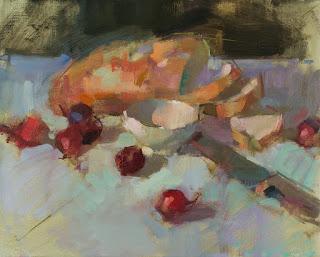
Bread and Bowl
16 x 20
oil on linen
It ain't over till it's over.
This still life captured my interest: the lighting, the composition, and the objects. Every day when I walked into the studio and saw it, I had the urge to paint it again. So I did - 4 times. I figure it's not excessive if I'm still having fun. When the thought another painting of bread makes me want to lie down with a cool cloth on my face, then it's excessive.
The first one was painted on fairly smooth linen which, in my experience, doesn't take a lot of paint before feeling and looking a bit heavy and tired. So I minimized the number of layers, working on color and composition more than on building the texture of the paint.
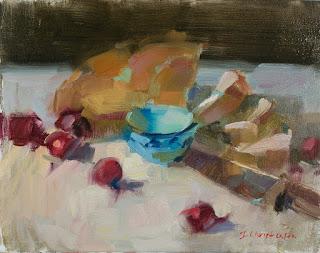
Bread and Bowl 2
14 x 18
Oil on Baltic birch
#2 was started on a wet wash of ivory black mixed with 50/50 linseed and mineral spirits. I've been using black a lot lately, finding that I enjoy the resulting coolness of the work, and the complex, rich greens that I can make with it and my cadmium yellows.
By working into the wash while it was wet, I neutralized and contaminated all of the other colours and layers with black. This allowed me to work with high chroma colours while knocking them all down a bit. It also harmonized the whole piece since the black acted like a mother colour, appearing in every other mixture on the panel.
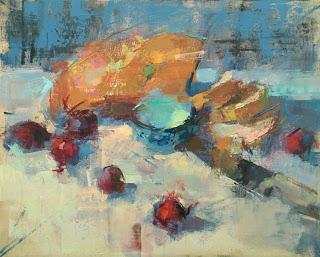
Bread and Bowl 3
16 x 20
Oil and cold wax on Baltic birch
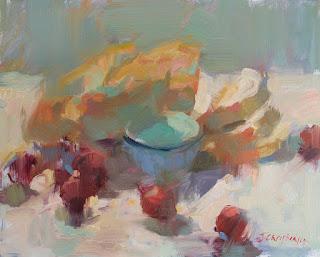
Bread and Bowl 4
Oil on Baltic birch
I backlit the subject and focused on seeing all of the elements in shadow as a single, simple mass. Within that mass, I found color changes but minimal value changes - that kept the eye focused on the bowl with its glowing piece of light-struck green.
My medium was 50/50 stand oil and mineral spirits, generously added to the paint to create a juicy mixture. It flowed off the brush, but, because stand oil is so thick, it naturally encourages me to pick up larger volumes of paint when working wet-in-wet than I would if using a thinner oil.
This has minimal layering though I did mingle warm and cool layers of color in the shadows to achieve a glowing, airy look.
It was cool cloth time after this last one, but I felt I had thoroughly explored the subject and, to some extent, my medium. It was time well spent.
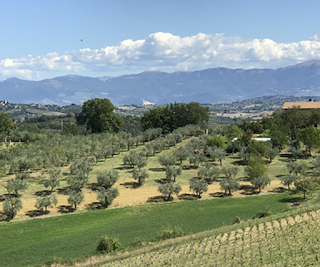
If you're interested in studying with me, there are still some spots available in my Umbria workshop in September. We'll have many and varied subjects, from still life to figure, and will bring both a rigorous, and thoughtful approach to bear on them. And we'll enjoy being in Umbria!
For more information, please see the Winslow Art Center Travel Workshops.
Happy painting!

